tank
 The making of the weapons of warfare is not always an easy task, and sometimes there is a lot of trial and error. When the different countries decided to begin making tanks, there were as many different styles as countries involved. That might sound like a good thing, but making an effective battle tank is no small undertaking, even in the best of times. Building one under the pressure of war is next to impossible. In fact, given the complexity of the machines, high costs, and stress of combat, I don’t know how they managed to make them work at all. Of course, not all tank designs were failures. There were a number of successful tanks, of course. If there hadn’t been we wouldn’t have tanks today. They would have just given up. Nevertheless, there were also a lot of failures.
The making of the weapons of warfare is not always an easy task, and sometimes there is a lot of trial and error. When the different countries decided to begin making tanks, there were as many different styles as countries involved. That might sound like a good thing, but making an effective battle tank is no small undertaking, even in the best of times. Building one under the pressure of war is next to impossible. In fact, given the complexity of the machines, high costs, and stress of combat, I don’t know how they managed to make them work at all. Of course, not all tank designs were failures. There were a number of successful tanks, of course. If there hadn’t been we wouldn’t have tanks today. They would have just given up. Nevertheless, there were also a lot of failures.
Tanks like the Bob Semple Tank, so named for the New Zealand politician tasked with designing it. Sadly, this dud was built with what limited materials or expertise, Semple and his team could get their hands on. The tank was designed after a picture on an American postcard. Basically, it was a tractor wrapped in steel with six 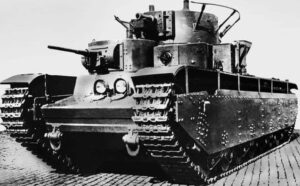 machine guns poking out at different angles. Ok, it might have looked like a tank, but that was about it. To change gear, it had to come to a complete stop…not a good way to ward off the enemy. One of the gunners of the eight-man crew had to lie on a mattress to squeeze into the cramped compartments, so he was pretty much done for it if the tank caught fire.
machine guns poking out at different angles. Ok, it might have looked like a tank, but that was about it. To change gear, it had to come to a complete stop…not a good way to ward off the enemy. One of the gunners of the eight-man crew had to lie on a mattress to squeeze into the cramped compartments, so he was pretty much done for it if the tank caught fire.
In true Hitler style, the Panzer VII Maus was the largest tank ever built. The size of the tank was its biggest downfall. The tank used too much fuel to be a logical option for a country running low on funds. In addition, the tank was so huge that it couldn’t maneuver through tree covered areas, and it was so slow that it couldn’t catch other tanks. It was also a sitting duck for aircraft looking to bomb it, because it just went so slowly.
The T-35, built in the Soviet Union, was the pride of the Red Army…until it was actually used in combat. This tank was outdated before it was built. A five-turret behemoth, it was a battleship on some seriously slow- moving treads. About the only thing it was good for was looking good in a parade. On the field…well, that was another matter. The T-35 required a 10-man crew to operate and many more to maintain. More than half of the 48 tanks used in the first attack in 1941, broke down before reaching the front.
moving treads. About the only thing it was good for was looking good in a parade. On the field…well, that was another matter. The T-35 required a 10-man crew to operate and many more to maintain. More than half of the 48 tanks used in the first attack in 1941, broke down before reaching the front.
Of course, there were other duds too. Probably too many to mention here. The tank was a good idea, and the good ones were like a rolling force field. The problem was that the ones that were poorly designed, rather outnumbered the ones that were good. I suppose that is why there are relatively few tank designs.
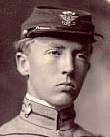
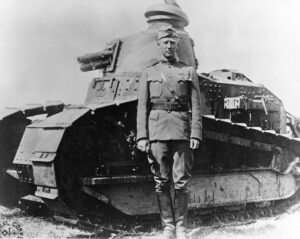 There are men of war, and then there are men of war. United States General George S Patton was the latter…meaning that he almost lived for war. Patton was a man who came from a long line of military people, and while he wasn’t always a tactful man, he was a great warrior…a fact that he proved over and over again. Many people didn’t like him much, but they couldn’t deny his capabilities. Patton was a great leader, but he wasn’t really a people person, and that got him in some trouble.
There are men of war, and then there are men of war. United States General George S Patton was the latter…meaning that he almost lived for war. Patton was a man who came from a long line of military people, and while he wasn’t always a tactful man, he was a great warrior…a fact that he proved over and over again. Many people didn’t like him much, but they couldn’t deny his capabilities. Patton was a great leader, but he wasn’t really a people person, and that got him in some trouble.
George Smith Patton Jr, who was born to George Smith Patton Sr and his wife, Ruth Wilson, the daughter of Benjamin Davis Wilson on November 11, 1885, in San Gabriel, California. Maybe because of his family history, or maybe it was just him, but Patton never seriously considered a career other than the military. At the age of seventeen he tried for an appointment to the United States Military Academy at West Point, New York. He also applied to several universities with Reserve Officer’s Training Corps programs, and was accepted to Princeton College, but eventually decided on Virginia Military Institute (VMI), which his father and grandfather had attended. Later, after studying at West Point, he served as a tank officer in World War I. Patton loved the tank, and his time as a tank officer, as well as his military strategy studies led him to become an advocate of the crucial importance of the tank in future warfare. When the United States entered World War II, Patton became the logical choice for the command of an important US tank division, and his division played a key role in the Allied invasion of French North Africa in 1942. Then, in 1943, in the Allied assault on Sicily, Patton and the US 7th Army in its assault on Sicily and won fame for out-commanding Montgomery during their pincer movement against Messina. Patton loved competition, and this was his chance to shine. On August 17, 1943, Patton and his 7th Army arrived in Messina several hours before British Field Marshal Bernard L Montgomery and his 8th Army, winning the unofficial “Race to Messina” and completing the Allied conquest of Sicily.
Although Patton was one of the most capable American commanders in World War II, he was also one of the most controversial. Patton was a “pull yourself up by your bootstraps” kind of guy, and therefore had no personal understanding of fear or fatigue. PTSD, battle fatigue, or shell shock were conditions he could not accept in anyone. In fact, they infuriated him so much that he actually slapped two soldiers who were suffering with the conditions. During the Sicilian campaign, Patton generated considerable controversy when he accused a hospitalized US soldier suffering from battle fatigue of cowardice and then personally struck him across the face. The famously profane general was forced to issue a public apology and was reprimanded by General Dwight Eisenhower. They would have liked to “walk away” from Patton, but when it came time for the invasion of Western Europe, Eisenhower couldn’t find a general as formidable as Patton, so, once again Patton was granted an important military post. In 1944, Patton commanded the US 3rd Army in the invasion of France. Then, in 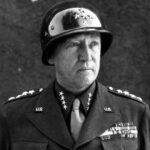
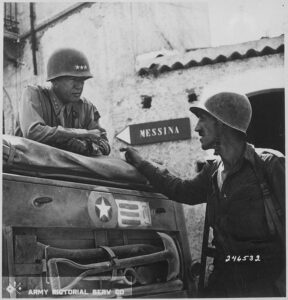 December of that year Patton’s great expertise in military movement and tank warfare helped to crush the German counteroffensive in the Ardennes.
December of that year Patton’s great expertise in military movement and tank warfare helped to crush the German counteroffensive in the Ardennes.
During one of his many successful campaigns, General Patton was said to have declared, “Compared to war, all other forms of human endeavor shrink to insignificance.” Patton died in a hospital in Germany on December 21, 1945, from injuries sustained in an automobile accident near Mannheim. He was just 60 years old.
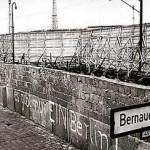
 On August 13, 1961, in the hours just after midnight, the East German soldiers began laying down barbed wire and bricks as a barrier between Soviet-controlled East Berlin and the democratic western section of the city. It was a day that would change life in Berlin for the next twenty eight years. In the days that followed, a wall was built to permanently close off access to the west. The citizens of East Berlin became prisoners in their own homes and city, in a prison that was built around them. The road between East and West Berlin had become a one way street. If you wanted in, you couldn’t come back out. Families were separated from each other, and those in the West had to make the choice to go be with family in East Berlin…and captivity, or not. The wall became the symbol of the Cold War. It was a literal Iron Curtain, dividing Europe.
On August 13, 1961, in the hours just after midnight, the East German soldiers began laying down barbed wire and bricks as a barrier between Soviet-controlled East Berlin and the democratic western section of the city. It was a day that would change life in Berlin for the next twenty eight years. In the days that followed, a wall was built to permanently close off access to the west. The citizens of East Berlin became prisoners in their own homes and city, in a prison that was built around them. The road between East and West Berlin had become a one way street. If you wanted in, you couldn’t come back out. Families were separated from each other, and those in the West had to make the choice to go be with family in East Berlin…and captivity, or not. The wall became the symbol of the Cold War. It was a literal Iron Curtain, dividing Europe.
When World War II ended in 1945, Germany was divided into four Allied occupation zones. Berlin, the German capital, was likewise divided into occupation sectors, even though it was located deep within the Soviet occupation zone. The future of Germany was a source of contention. Disagreements brought tensions which grew when the United States, Britain, and France moved in 1948 to unite their occupation zones into a single autonomous entity known as the Federal Republic of Germany or West Germany. In response, the Soviet Union launched a land blockage of West Berlin in an effort to force the West to abandon the city. The United States and Britain responded with a massive airlift of food and supplies to West Berlin, and in May of 1949, the Soviet Union ended the blockade in defeat.
That didn’t remove the tensions that plagued the area, however. By 1961 the Cold War tensions were running high again. The East German people became very dissatisfied with life under the communist system. West Berlin was a gateway to the West and Democracy. Between 1949 and 1961, about 2.5 million East Germans fled East Berlin to West Germany. By August of 1961, East Germans were crossing into West Germany at a rate of 2,000 people per day. Many of the refugees were skilled laborers, professionals, and intellectuals, and their loss was having a devastating effect on the East German economy. The Soviets had to figure out a way to stop the exodus, and its devastating effect on the economy. Soviet leader Nikita Khruschev made the decision to close off access from East Berlin to West Berlin.
Then came the night of August 13, 1961. The citizens of East Berlin could no longer freely pass into West Berlin. The West was taken by surprise, and threatened a trade embargo against East Germany as a retaliatory measure. The Soviets responded that such a measure would bring new blockades. The West did nothing, and the East German authorities grew more and more bold. They began closing of more and more checkpoints between East and West Berlin. On August 15, they began replacing barbed wire with concrete. The wall was supposedly designed protect their citizens from the influence of decadent capitalist culture. In realty, it protected the East German authorities from scrutiny as they did what they wanted with out retaliation.
Once it was up, the only way for East Berliners to escape the oppression of their government was to take their chances to get across in whatever way they could dream up. People attempted escape by train, tight rope, zip lines, hot air balloons, through old tunnels, impersonating soldiers, a stolen tank, and swimming. Many of these attempts ended in death for the person attempting escape. It didn’t stop them. They were so determined to live freely. About 5,000 East Germans managed to escape across the Berlin Wall to the West, but the frequency of successful escapes dwindled as the wall was increasingly fortified. Thousands of East Germans were captured during attempted crossings and 191 were killed.
On June 12, 1987 President Reagan made his great “tear down this wall” speech, but the wall remained until 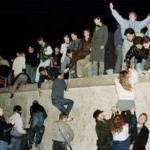
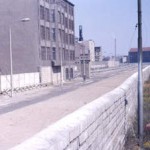 1989, when the democratization movement began sweeping across Eastern Europe. On November 9, 1989 travel restrictions were eased. Jubilant Berliners climbed on top of the Berlin Wall, painted graffiti on it, and removed fragments as souvenirs. The next day, East German troops began dismantling the wall. In 1990, East and West Germany were formally reunited. For those in the free world, it would be almost impossible to completely understand just what Communism was like, but those who lived it, would never forget it, if they even lived through it, which many didn’t.
1989, when the democratization movement began sweeping across Eastern Europe. On November 9, 1989 travel restrictions were eased. Jubilant Berliners climbed on top of the Berlin Wall, painted graffiti on it, and removed fragments as souvenirs. The next day, East German troops began dismantling the wall. In 1990, East and West Germany were formally reunited. For those in the free world, it would be almost impossible to completely understand just what Communism was like, but those who lived it, would never forget it, if they even lived through it, which many didn’t.
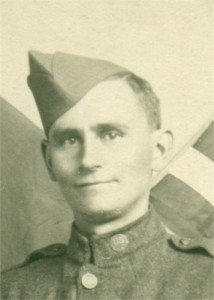 Many members of my family have fought in the many wars that have taken place in this world’s history…most of them I probably know nothing about. Wars, while usually necessary in order keep our nation secure; take a heavy toll on its youth. Of course, in years gone by, women were not placed in combat positions. That is no longer the case. Now women are among those war dead, just like men are.
Many members of my family have fought in the many wars that have taken place in this world’s history…most of them I probably know nothing about. Wars, while usually necessary in order keep our nation secure; take a heavy toll on its youth. Of course, in years gone by, women were not placed in combat positions. That is no longer the case. Now women are among those war dead, just like men are.
The weapons of warfare have become more and more deadly over the years, but I can’t say that there were more war dead because of that. War dead numbers seem to fluctuate with the war, and with the willingness to die, on the part of both sides. Sometimes however, something is invented, and then improved to save lives. Such was the case with the tank. On September 6, 1915, the tank, nicknamed Little Willie rolled off of the assembly line in England. That first tank was less than well received. It was slow…maxing out at 2 miles per hour. It weighed 14 tons, and kept getting stuck in the trenches. Nevertheless, it was important, since wars had moved into that type of fighting. Trench warfare often made soldiers sitting ducks…both the ones in the trenches, and the ones coming up on the trenches. The plan was to make a vehicle that could go cross country, and into the trenches with relative safety.
I’m sure the designers were very disappointed, but they didn’t give up. They went to work to improve this valuable piece of military equipment. The next model…Big Willie debuted a year later, and while it still needed improving, people could now see how important the vehicle would become in response to the trench warfare of World War I. The tank was in existence when my grandfather was drafted into World War I, but I don’t know if he ever had the opportunity to see one or ride in one. I can’t say if the tank changed the way that World War I was going, but it has definitely made a difference in the wars since that time.
The tank has come a long way since those days…including the name. It was never in the plan to call this piece of equipment a tank. They had planned to make a landboat, and organized a Landships Committee to begin development. It was vital that they keep the vehicle a secret from enemies, so workers were apparently told that they were building a machine to carry water on the battlefield. Some say that the tank resembled water tanks. Whatever the case may be, the new vehicles were shipped in crates labeled “tank” and the name stuck.

